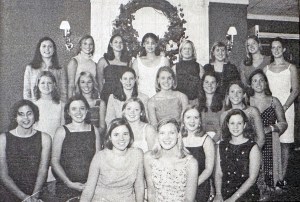Growings On: Fall webworm or Eastern tent caterpillar?
Published 8:00 am Wednesday, July 12, 2023

- Brenda Jackson
Do you have some sort of webbed tent-like structure in your trees? Something that looks like the Eastern tent caterpillar or the fall webworm?
Feeding damage and the nests look ugly but healthy trees usually recover with no problem. They will leaf back out again pretty quick from the spring and summer feeding of the Eastern tent caterpillars. Late summer and fall feeding from fall webworms might be more problematic as trees may not have time to put out new leaves before winter dormancy begins.
Trending
The Eastern tent caterpillar is one of the first insects to become active in the spring and early summer. This caterpillar larva is black with brown hairs and a white stripe down its back. They will reach up to 2.5 inches long. The adult moth is reddish brown with two white stripes on the fore wings. Adult moths emerge in May and June and will lay egg masses that circle the limbs of their host tree. The eggs will overwinter on that tree and emerge the following spring to begin the cycle again.
The larva are eating machines that feed on cherry, apple, peach, plum and crabapple leaves, and have been found on various hardwoods such as ash, blackgum, birch, sweetgum, oak, poplar and maple. They hatch together and will develop a nest mass in the forks of a couple of limbs. As they eat and grow, so will the tent/nest. The larva will move outward from the nest to feed and return at night or during rain. It takes about three weeks for the larva to mature from hatching into adults.
The fall webworm is one to watch for later in the summer and will be from summer into fall. The adult moth is white and somewhat fuzzy/hairy and the female will lay eggs on the underside of leaves in a mass. In about a week they hatch and start building their web at the ends of a branch. They grow to about one inch long, with black or reddish heads, pale yellow or greenish bodies, and covered with fine hairs.
They start by feeding inside the web, skeletonizing the leaves. As they develop and consume leaves within the web they will expand the web and continue to cover more and more foliage as they grow, potentially engulfing an entire tree. They will feed for about six weeks before leaving the web. The caterpillars will pupate under bark, in the soil or under rocks, before emerging as an adult. The pupal period will vary from 12-80 days depending on the weather and they can overwinter as pupa before emerging the next year.
These pests are mostly just a nuisance, and control is seldom necessary but if nests develop in young trees you can remove the tents and developing larva by hand. You can also prune out the egg masses from Eastern tent caterpillars, they are a dark brown color circling the limb, to prevent a spring hatching; best to do it in winter when you can see them.
For fall webworms you can use a broom or coat hanger to break up and pull down the nest. Homeowners can use a contact insecticide spray for smaller trees but in larger trees you’ll need a professional to come out with something like a bucket truck, which isn’t always cost effective. Use sprays with active ingredients such as permethrin, carbaryl, cyfluthrin, cyhalothrin or Bt (bacillus thuringiensis). These caterpillars also provide a good food source for birds and predatory and parasitic insects like wasps.
Trending
If you have any questions, feel free to contact Brenda Jackson at Murray County Extension at (706) 695-3031 or bljack@uga.edu.




